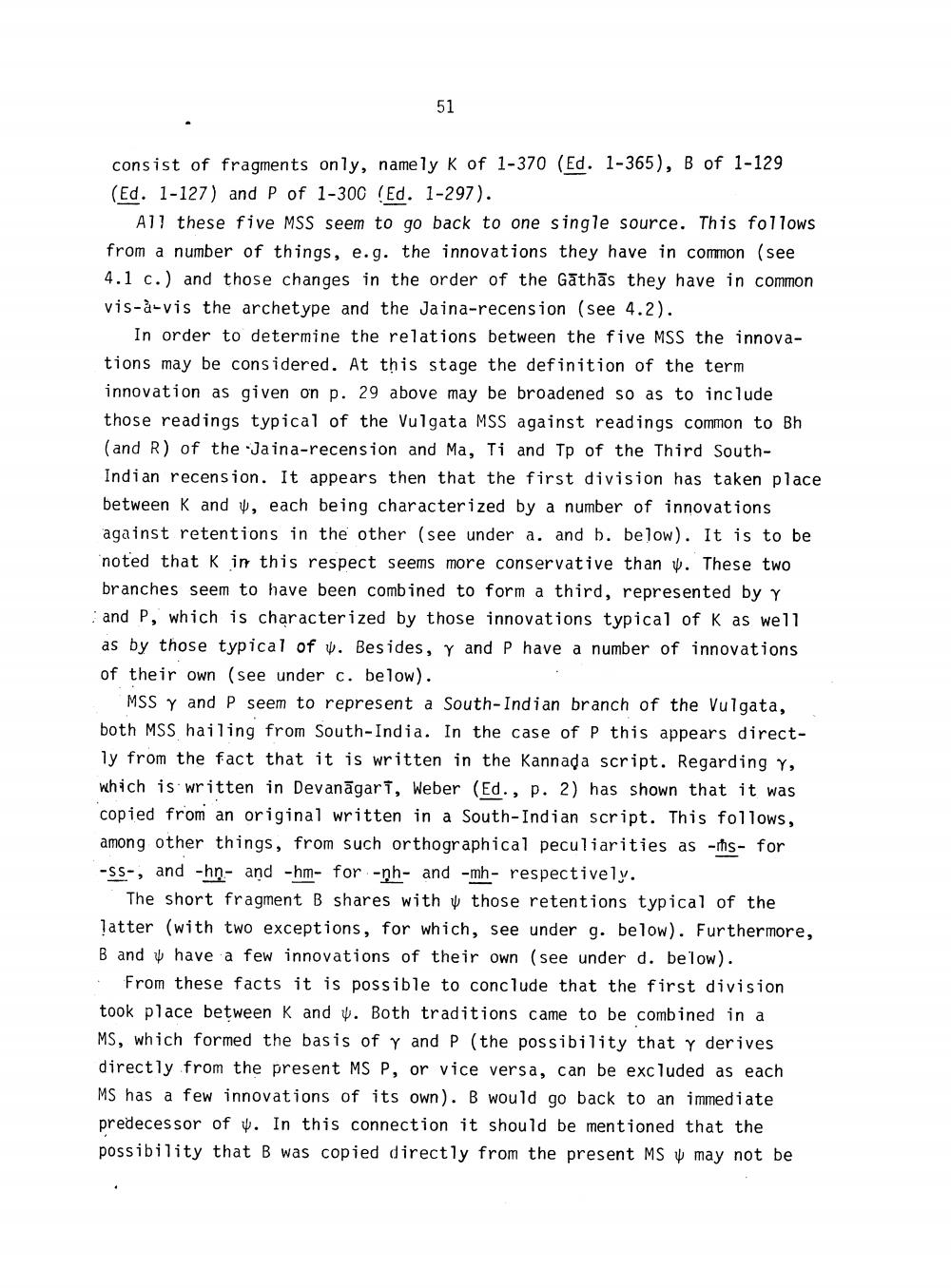________________
51
consist of fragments only, namely K of 1-370 (Ed. 1-365), B of 1-129 (Ed. 1-127) and P of 1-300 (Ed. 1-297).
All these five MSS seem to go back to one single source. This follows from a number of things, e.g. the innovations they have in common (see 4.1 c.) and those changes in the order of the Gathas they have in common vis-à-vis the archetype and the Jaina-recension (see 4.2).
In order to determine the relations between the five MSS the innovations may be considered. At this stage the definition of the term innovation as given on p. 29 above may be broadened so as to include those readings typical of the Vulgata MSS against readings common to Bh (and R) of the Jaina-recension and Ma, Ti and Tp of the Third SouthIndian recension. It appears then that the first division has taken place between K and y, each being characterized by a number of innovations against retentions in the other (see under a. and b. below). It is to be noted that K in this respect seems more conservative than y. These two branches seem to have been combined to form a third, represented by Y and P, which is characterized by those innovations typical of K as well as by those typical of v. Besides, y and P have a number of innovations of their own (see under c. below).
MSS Y and P seem to represent a South-Indian branch of the Vulgata, both MSS hailing from South-India. In the case of P this appears directly from the fact that it is written in the Kannada script. Regarding y, which is written in Devanāgarī, Weber (Ed., p. 2) has shown that it was copied from an original written in a South-Indian script. This follows, among other things, from such orthographical peculiarities as -ms- for -SS-, and -hn- and -hm- for -nh- and -mh- respectively.
The short fragment B shares with those retentions typical of the latter (with two exceptions, for which, see under g. below). Furthermore, B and have a few innovations of their own (see under d. below).
From these facts it is possible to conclude that the first division took place between K and y. Both traditions came to be combined in a MS, which formed the basis of Y and P (the possibility that y derives directly from the present MS P, or vice versa, can be excluded as each MS has a few innovations of its own). B would go back to an immediate predecessor of y. In this connection it should be mentioned that the possibility that B was copied directly from the present MS may not be




